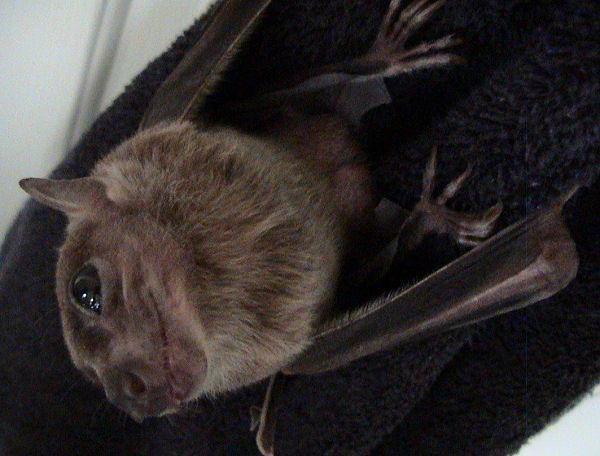A group of scientists have reported the successful separation of Marburg virus genome sequences from a common bats eating African fruits (also known as Egyptian fruit bats, or Rousettus aegyptiacus). The results of the study were published in PLoS Pathogens with specific information to identify the intermediate host of this deadly disease.
Infection with Marburg virus and Ebola virus relative to it can lead to a very dangerous disease in humans, with fever manifestations accompanied by hemorrhage. When the epidemic breaks out, up to 90% of cases result in death. The natural habitat of Marburg and Ebola virus has long been a scientific research and survey topic.
 Bats eat Egyptian fruits, scientific name Rousettus aegyptiacus. Scientists have reported successful separation of Marburg virus gene sequences from Egyptian fruit bats. ( Photo: Wikimedia Commons / Public Domain)
Bats eat Egyptian fruits, scientific name Rousettus aegyptiacus. Scientists have reported successful separation of Marburg virus gene sequences from Egyptian fruit bats. ( Photo: Wikimedia Commons / Public Domain)
This study provides strong evidence for the host of the Marburg virus. While previous surveys have found antibodies and multiple segments of the Marburg virus in the bat, this study goes one step further by successfully separating viruses that cause disease from bat tissues.Research shows that this bat carries within it the live Marburg virus. In addition, the study also identified the genetic link between bats and viruses found in infected workers.
The genetic sequences from bat bodies have a high diversity, which proves that bats eating Egyptian fruit infected with this virus are not a temporary phenomenon. R. aegyptiacus bat is a species that usually lives in caves and is widely distributed in sub-Saharan Africa.
Many caves and mines in this area have large colonies of R. aegyptiacus.Caves, especially tourist spots, and mining fields, are an ideal place for contact between humans and bats carrying viruses. With the precise identification of the intermediate host of the virus, the health agency can direct the public health care measures necessary to prevent the Marburg dengue outbreak in the future. In addition, the results of the study also put scientists a step further in finding the natural residence of the Ebola virus, a close relative of the Marburg virus.
 'Fine laughs' - Scary and painful torture in ancient times
'Fine laughs' - Scary and painful torture in ancient times The sequence of numbers 142857 of the Egyptian pyramids is known as the strangest number in the world - Why?
The sequence of numbers 142857 of the Egyptian pyramids is known as the strangest number in the world - Why? History of the iron
History of the iron What is alum?
What is alum?